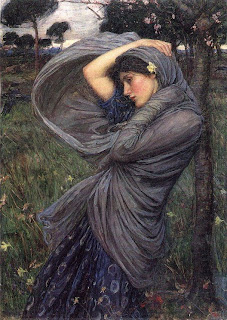 First of all, I have been so turned around lately with everything that is going on that I almost forgot I have a Harlequin Historical Undone story out in August!!!! Unlacing The Lady in Waiting is set at the court of Mary Queen of Scots, and was so much fun to write, so I’m excited to see it out now, and with such a yummy cover. (see more info and how to order here…) I’ll talk more about it next Tuesday and give away a free download!
First of all, I have been so turned around lately with everything that is going on that I almost forgot I have a Harlequin Historical Undone story out in August!!!! Unlacing The Lady in Waiting is set at the court of Mary Queen of Scots, and was so much fun to write, so I’m excited to see it out now, and with such a yummy cover. (see more info and how to order here…) I’ll talk more about it next Tuesday and give away a free download!
And lately I have been reading every non-fiction book I can find about the Victorian era for my next Laurel McKee series (book one, One Naughty Night will be out in June 2012…), and right now I’m in the middle of a great read. Pleasure Bound: Victorian Sex Rebels and the New Eroticism by Deborah Lutz is one of the works that has really opened my eyes to the truth of the period, which belies its rule-bound surface and myths and shows the bubbling cauldron of massive change and rebellion underneath, personified by artists, poets, and explorers like Dante Gabriel Rosetti and Richard Burton (among others). It’s fascinating stuff, and perfect for my research on a series that centers around an artsy, scandalous family that stands just outside the reach of propriety.
 From the cover copy: In this stunning expose of the Victorian London we thought we knew, Lutz takes us beyond the eyebrow-raising practices of these sex rebels, revealing how they uncovered troubles that ran beneath the surface of the larger social fabric; the struggle for women’s emancipation, the dissolution of formal religions, and the pressing need for new forms of sexual expression.
From the cover copy: In this stunning expose of the Victorian London we thought we knew, Lutz takes us beyond the eyebrow-raising practices of these sex rebels, revealing how they uncovered troubles that ran beneath the surface of the larger social fabric; the struggle for women’s emancipation, the dissolution of formal religions, and the pressing need for new forms of sexual expression.
I especially enjoy the way the author describes the many figures of this movement in a way that brings them to life and centers them in their world. One especially fascinating person I don’t know a great deal about (except for her appearance in paintings) is Jane Morris, wife of William Morris and lover of Rossetti and others: She fashioned herself into a bold character, making living a creative act…Jane too could play at Byronism. Taking the part of a mysterious, gravely silent cipher, she seemed to others to hide a brooding interior and a tormented, unknowable past. She topped it off with a secret sexual life, unusual for a woman of her time. Designing, dying, and sewing her own clothes, Janey shunned the current ultra-feminine fashions with their crinolines, corsets, and bustles for medieval art robes….
And, since it is yet another day of 100+ temps here and my mind seems friend along with my lawn (and because I just like them), let’s look at some pretty Pre-Raphaelite paintings!





Do you enjoy the Pre-Raphaelites? What’s your favorite painting by them? Anything surprising about history you’ve discovered through reading? And how are you staying out of the heat?? (I finally got to see the new Harry Potter movie this weekend–it was fabulous, but a little sad it’s all over now…)
 One of the reasons many of us love the Regency period so much is the clothing; the Georgian period, which preceded it, was often ridiculously overwrought, with men wearing red heels and patches and powder, and women wearing oversized, silly hats and wigs.
One of the reasons many of us love the Regency period so much is the clothing; the Georgian period, which preceded it, was often ridiculously overwrought, with men wearing red heels and patches and powder, and women wearing oversized, silly hats and wigs.
 I haven’t been following fashion much lately–my son is, well, male, and he hasn’t gotten beyond manga t-shirts and jeans yet; my husband is a dandy, but he manages to stay on top of trends quite well without me. I did go out last night to see live music, and there were many twenty-somethings decked out in their glory; it was funny to see some of the fashion I wore as a high schooler thirty years later (yikes!).
I haven’t been following fashion much lately–my son is, well, male, and he hasn’t gotten beyond manga t-shirts and jeans yet; my husband is a dandy, but he manages to stay on top of trends quite well without me. I did go out last night to see live music, and there were many twenty-somethings decked out in their glory; it was funny to see some of the fashion I wore as a high schooler thirty years later (yikes!).



